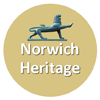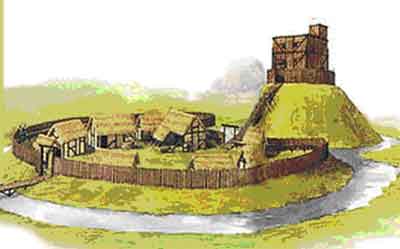
Norman Market

Today's market is a legacy of the Norman Conquest.
In 1066 Norwich was a prosperous community handling the trade of a flourishing hinterland. As in other English cities the Normans needed to impose their authority which they did by building the Castle and the Cathedral. At the same time they created a new borough west of the castle in a district they called “Newport.” Here a market was laid out in an area called “Mancroft” “Magna Crofta” – “big field” (equivalent today to an area between Bethel Street and St Giles Street). In essence the market was set up to accommodate the French merchants who built houses under the protective shadow of the Castle and probably to supply the garrison who were stationed there. Slowly but surely this supplanted the market in Tombland & became the focus of commercial life in Norwich.
Astonishingly, in this period we see "Norman" versions of buildings that still give the market place its distinctive landscape in the 21st century. Thus it was Ralph de Guader who built the church that was the predecessor of the current St Peter Mancroft whilst a Tollhouse was built on the site of the Guildhall. Later the Tollhouse became the centre for civic functions & the judiciary.
Despite the transfer of trade to the "new" market, Tombland retained its charter to hold the annual Easter Horse Fair. However, by the end of the century the Saxon market and other properties on Tombland had been cleared away to make way for the Norman Cathedral.
Despite early disruption it soon became evident that the new market was bringing trade and prosperity to the city.